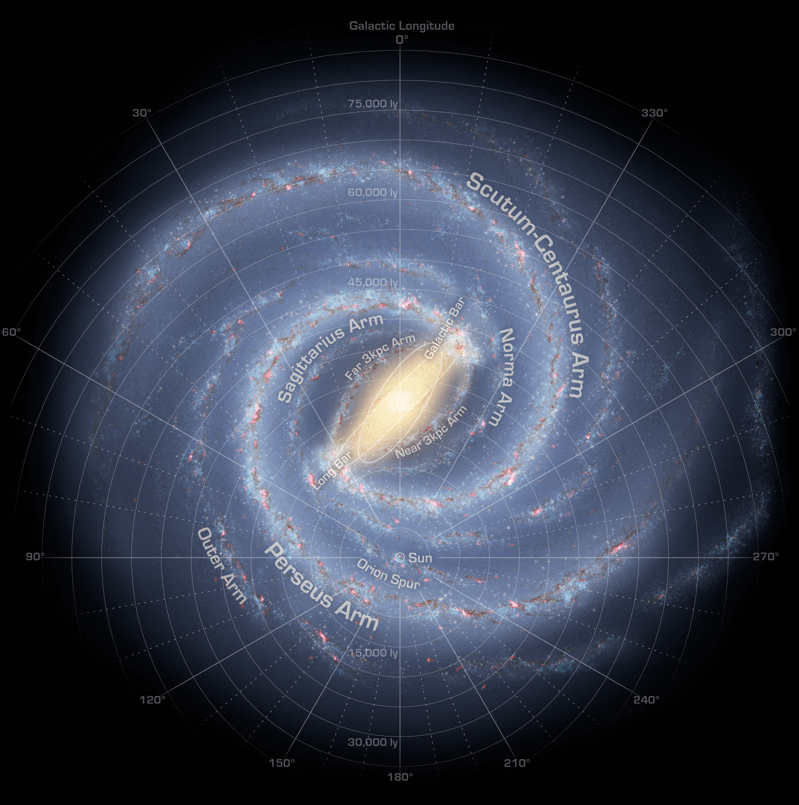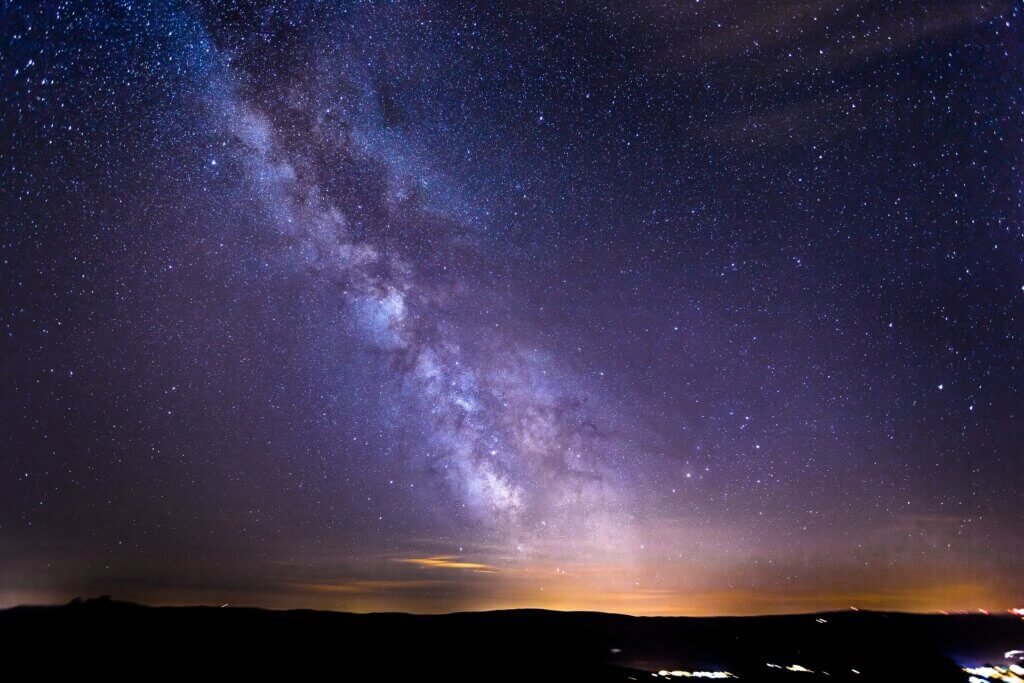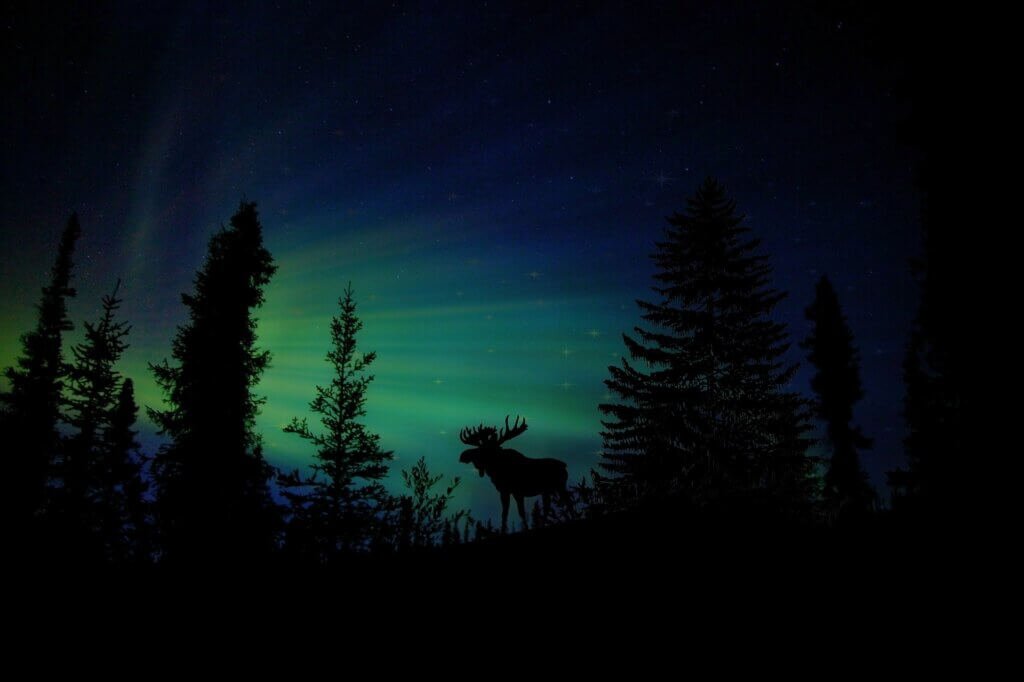Can You Still See The Stars?
As a science fiction writer and an avid stargazer, I love seeing the stars. They remind me of where in the universe we are. A recent article by CBC proposed that, due to light pollution, “most Canadians are about as likely to see the Milky Way as they are to see a beaver riding on the back of a moose.” Living in Northern British Columbia, I’ve seen a fox with a beaver in its mouth and I’ve seen a moose in my front yard. I haven’t seen a beaver riding on a moose, but I do have a view of the Milky Way.
With three quarters of Canadians living in light-filled cities, I’m one of the lucky few who still have the ability to look up into the sky and see the stars. I’ve been able to drag my kids outside in their pajamas to point out Mars and Jupiter and Saturn and Venus when the planets have been visible. We’ve watched for “falling stars” and marvelled when the planets line up just over the treeline.
The latest study indicating that the sky is brightening even faster than expected, making the stars harder to see, is not a surprise, but it does give me a profound sense of solastalgia. For eons, stars have been a source of guidance for the human race. They’ve been a source of legends and myths, stories and signs. They’ve been a way to navigate and to know where we are. Losing the ability to see the stars feels like a symbol of how myopic society has become.

Derived from nostalgia, Solastalgia is a form of homesickness one gets when one is still at home, but the environment has been altered and feels unfamiliar. The term is specifically referencing change caused by chronic change agents like climate change or mining. Used primarily to describe the negative psychological effect of chronic environmental destruction on an individual’s homeland, or the place they call home.
Bureau of Linguistic Reality
Where In the Universe Are We?
The stars are a reminder of where we are in the universe, so here’s a refresher:
Earth hurtles around the sun approximately every 365 days. Over geological time, the Earth has been through five mass extinction events, at least five major ice ages and ongoing shifts in the position of the tectonic plates. The Earth is in constant flux.
Our little planet is the third planet from the Sun (a 4.5 billion year old yellow dwarf star), preceded by Mercury and Venus and followed by Mars, Jupiter, Saturn, Uranus and Neptune. Between Mars and Jupiter is the asteroid belt and beyond Neptune’s orbit is the Kuiper Belt, which contains comets, asteroids and bits of ice. Even further is the Oort Cloud, made up mostly of icy planetesimals.

Side note: If you've ever been curious about the topography of Mars, check out Google Mars (like Google Earth but for Mars!)
All of this is contained within the Milky Way galaxy. The Milky Way is a spiral galaxy and is believed to have two major arms and several smaller arms. Each of these arms spiral around the massive black hole at the center of our galaxy. Our sun (and the accompanying planetary system we call home) reside between the Sagittarius arm and the Perseus arm in an unassuming branch called the Orion Spur.

Beyond the Milky Way are more galaxies within the universe. Andromeda is the neighbouring galaxy to the Milky Way and is predicted to be on a collision course with our galaxy in approximately 4 billion years from now. That will happen before our sun sputters out (becoming a red giant star, then a white dwarf, then a planetary nebula) in approximately 5 billion years. But that’s beside the point. There are multitudes of galaxies out there in the universe.
Check out the following YouTube video for a sense of the scale of the universe and our place within it.
What Are You Seeing if You See the Milky Way?
If you are one of the lucky few who can find a beaver riding a moose, when you look up into the night sky and see the hazy band of the Milky Way, you’re looking across the spiral disc of stars. The galactic core (the center of the galaxy) is the brightest part of the Milky Way and is visible in the constellation of Sagittarius.

What Does This Mean for Humanity?
The way I see it, there are two ways to consider our place in the universe. One: Existentialism. If we’re so tiny, does anything matter anyway? Or two: Hope. I, for one, derive a great sense of comfort from knowing our place within the stars. No matter how things appear here on Earth, there’s always a bigger picture. I hope we can continue to see the night sky to remind us of that.
Though my soul may set in darkness, it will rise in perfect light; I have loved the stars too fondly to be fearful of the night.
Sarah Williams
If you enjoyed this post, please subscribe to my monthly newsletter for notice of new blog posts and book news.





